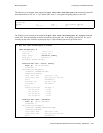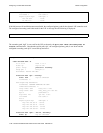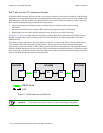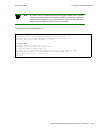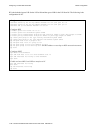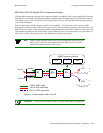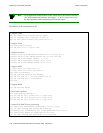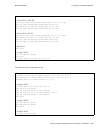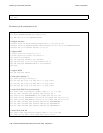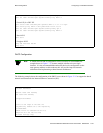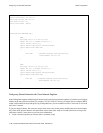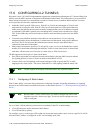
Riverstone Networks RS Switch Router User Guide Release 8.0 17-53
MPLS Configuration Configuring L3 Label Switched Paths
MPLS with CMTS for Multiple ISPs Configuration Example
Utilizing MPLS technology, Multiple Service Operators (MSOs) can dedicate LSPs to each supported ISP, allowing
subscribers to be separated onto appropriate pipelines. Differentiating ISP traffic enables ISPs and MSOs to deliver
value-added services, such as tailored service level agreements (SLAs) to each individual subscriber and improved
voice-based technologies.
In the example below, an MSO supports two ISPs: AOL and AT&T. The LSP dynamic2AOL will carry traffic
belonging to subscribers of AOL, while the LSP dynamic3ATT will carry traffic belonging to AT&T subscribers. The
third LSP, dynamic1MSO,
will be used by the MSO to assign IP addresses to subscriber’s end devices and to provision
cable modems; the MSO can also use the LSP to provide Internet services to customers who are non-subscribers of
either AOL or AT&T and to provide other value-added services offered by the MSO.
Note
In this example, the MSO is the sole provider for IP addressing, therefore only one
DHCP server is required. The configuration for the DHCP server in a shared
network environment is shown in this section.
Figure 17-12 Cable modem traffic over LSP
Timesaver
Click on the router name (in blue) to see the corresponding configuration.
R1
R2
R3
DHCP
Modem
Modem
Clients
Clients
AOL
AT&T
LSP for DHCP traffic
LSP for AOL cable traffic
LSP for AT&T cable traffic
TFTP
TOD
MSO Provisioning Servers



